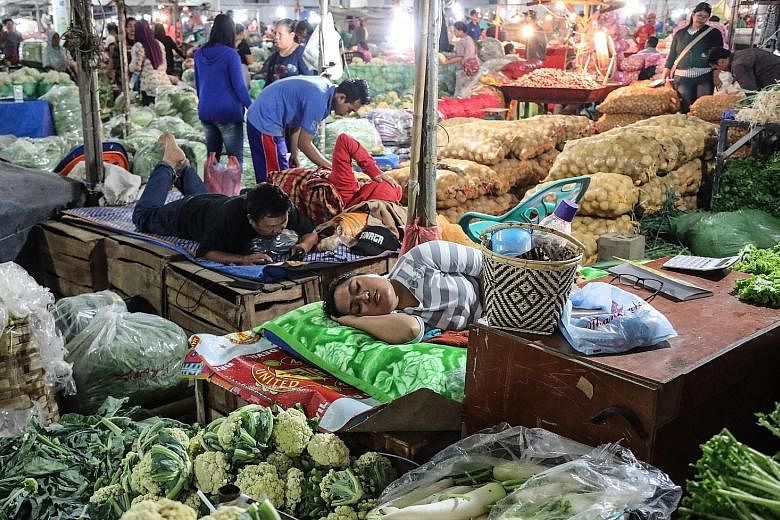JAKARTA • Indonesia's economy grew slightly slower than expected in the third quarter, as private consumption continued to flatline, confounding efforts by policymakers to push the growth rate much above 5 per cent.
South-east Asia's largest economy expanded 5.06 per cent in July-September from a year earlier, the statistics bureau said yesterday, compared with 5.01 per cent in both the first and second quarters. A Reuters poll forecast 5.13 per cent for the third quarter.
Indonesia's growth has stagnated at around 5 per cent since the fourth quarter of 2014 as private consumption, which accounts for about half of gross domestic product, has remained sluggish.
Private consumption grew 4.93 per cent in the third quarter from a year earlier, a fraction below the second quarter's 4.95 per cent pace.
"Consumption remained flat... Although Bank Indonesia (BI) recently has cut its key rate twice, it will take time to have an impact," said economist Josua Pardede at Bank Permata in Jakarta.
On a positive note, government spending grew 3.46 per cent in the third quarter, picking up pace after a near 2 per cent annual contraction in April-June.
Investment also took on a bigger role in growth and rose 7.11 per cent, up from 5.35 per cent in the second quarter, including US$8.3 billion (S$11.3 billion) of foreign direct investment focused on metals, machinery, electronics and mining.
-
4.93%
Increase in private consumption in the third quarter from a year earlier.
3.46%
Growth in government spending picked up pace in the third quarter.
In a bid to spark more lending and growth, BI has cut its benchmark interest rate eight times - by a total of 2 percentage points - since the start of last year. The two latest cuts, which surprised the market, came in August and September.
Inflation, often a problem in Indonesia, has been low this year - giving BI room to make rates cuts. So far, however, this has not spurred more activity.
In September, bank lending expanded 7.86 per cent from a year earlier, below BI's 2017 target of 10 per cent.
"We think fiscal policy should do more of the heavy-lifting to boost growth rate rather than monetary policy," said Nomura economist Euben Paracuelles in Singapore.
BI's economic growth forecast this year is 5 to 5.4 per cent, while the government has targetted 5.2 per cent. President Joko Widodo's pledge to reach 7 per cent in 2019 is looking unreachable.
Indonesia has boosted infrastructure development and launched economic deregulation packages to cut red tape and streamline its notorious bureaucracy. Still, Mr Joko has complained about many ministerial regulations hurting investments.
Finance Minister Sri Mulyani Indrawati told Reuters last week stronger global growth was starting to feed through to Indonesia's economy.
A recovery in demand for commodities such as coal and metals helped Indonesia post a US$3.2 billion trade surplus in the third quarter, up from US$2.28 billion a year earlier.
Asked about sluggish consumption, she noted shifting patterns and said some groups were being hit by a cut in electricity subsidies and stagnant wage increases in sectors like construction.
REUTERS

